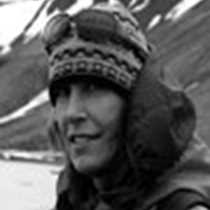Rio Ucayali: Cedro Caño, Casa Grande and Supay
The morning dawned still and fairly clear, with just a scrim of clouds. Beautiful. Many of us headed out to take advantage of the cool, pre-breakfast air. Cedro Caño was our morning site of exploration, and its narrow route offered us discoveries galore. Perhaps the highlight was two cotingas, a plum-throated and a spangled, perched side by side at the top of a tree, for all the world looking like a pair of bright blue jewels lit from within.
After breakfast, we took the Delfin II further upstream to the community of Casa Grande. Formerly known as Casablanca, we learned from residents that they’d changed their name when the river took away their houses and they had to rebuild. It made sense. We might want to new start, too. One of the pleasures of traveling the upper Amazon is the people. Generous, open, and full of humor, they welcomed us to their homes this morning and our guides helped us ask questions about their lives.
Kids followed us everywhere. This was the first time that the Delfin II had visited this community, and cameras broke the shyness. It’s nearly a universal truth that people are curious about images of themselves, and turning a camera around to show the digital image that’s just been taken is a great icebreaker. We met the chickens that lived with one family, brooding near the cooking area; we met a midwife who told us about childbirth along the river; we met a man resting with his kids in a hammock after a morning out fishing who still lived in a house built in the traditional style with palm and cane for flooring and walls rather than lumber.
There was no prearranged cultural demonstration or central hall. Rather, our paths converged a while with that of the community of people who were busy with their own lives. It gave us all a chance to think about the many ways a full and rich life can be lived.
Back aboard the Delfin II, we were treated to a conversation with our captain and the ship’s engineer at the request of a few guests who were curious about the logistics of running a boat in the Amazon. After lunch, we pushed back our afternoon explorations by half an hour, hoping to duck the brunt of the day’s heat.
What joy to set off with a good breeze into a new corner of the Pacaya-Samiria Reserve. The heat prompted some of us to leap into the waters of Supay Lake. “We swam in the Amazon!” we said to ourselves as we paddled and loafed on Styrofoam noodles and watched the quick surfacing of pink river dolphins around us. Others chose to focus less on the immediate sensory experience of Supay and more on what fluttered, leapt, and called from the vegetation. Either way, it was a wonderful way to deepen our experience of the Ucayali and the rain forest.




